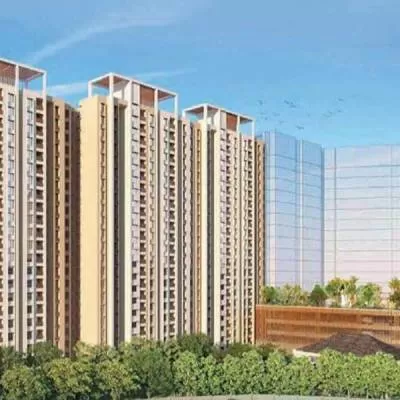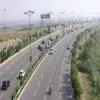- Home
- Real Estate
- Down to Earth!
Down to Earth!
Although reinforced earth has been used in various projects worldwide since 1966, the concept took some time to take root in India. Geosynthetics was introduced in India only in the late 1990s. These materials are particularly used in the construction of flyovers, road projects and urban areas where space is restricted. Earlier, the foundations of retaining walls would creep into other people’s properties. Similarly, the construction of flat approach embankments for flyovers in urban areas was difficult. In situations like these, the use of geosynthetics proves to be extremely beneficial. They not only reduce the cost of construction but also increase its speed; walls constructed with these materials prove to be 30-40 per cent cheaper. In conversation with SHUBHANGI BIDWE, Dr -Ing BVS VISWANADHAM, Professor, Department of Civil Engineering, IIT Bombay, highlights the many advantages of geosynthetics without overlooking the shortcomings.
What are they?
Encompassing eight categories – geotextiles, geogrids, geonets, geomembranes, geosynthetic clay liners, geofoams, geocells and geocomposites – geosynthetics are polymeric products used to solve civil engineering problems across the world. They are available in a wide range of forms and materials, each to suit a slightly different end user. Geotextiles are manufactured by using tape fibres or yarns. They are available in woven and non-woven varieties. These contain a certain amount of fibre and can be customised according to site requirements. Traditionally, soil is also weak in tension; so you would need to apportion its load with geogrids. Geogrids are open-type mesh elements made with poly-propylene or polyester strands that lend high tensile strength. The tensile strength of these geogrids ranges between 35 kN/m and 200 kN/m, and they can take a load of upto 200 kN/m. Geogrids are used in a number of applications. Geocomposite – a hybrid material – on the other hand, serves the dual purposes of reinforcing the soil and monitoring drainage of water. Geonet is particularly used for the drainage of water in parking lots, while geomembranes are impervious membranes used in environmental infrastructure, particularly construction. They predominantly prevent rainwater from entering solid waste or gas emitting within to escape into the surrounding environment. These are combined with other materials like non-woven geotextiles as a cushion and geonet as a drainage material, which prevents the material from being punctured and ensures durability.
Major applications
Geosynthetics have a variety of applications and are currently being used in many civil, geotechnical, transportation, geo-environmental, hydraulic and private development applications, including roads, airfields, railroads, embankments, retaining structures, reservoirs, canals, dams, erosion and sediment control, landfill lining systems and covers, mining, aquaculture and agriculture. In essence, they have five major applications. First, they can be used in separating two dissimilar materials. For instance, in road construction on soft subgrade, placement of a suitable geosynthetic material prevents aggregate puncture. Similarly, puncturing of railway ballast of track under layment can be prevented by introducing a suitable geosynthetic material. This in turn reduces maintenance costs and the speed of trains. Another important application is filtration, which allows only water in the soil to flow out perpendicular to the plane. This also aids in drainage of water. Conventionally, in road construction, a 200 mm thick sand drainage layer below the pavement block is used to drain water. Here, geotextiles offer several benefits. In road construction, geosynthetics are laid along with the soil in the direction of requirement. They are used as separators between sub grade and aggregate layer or as an asphalt crack relief layer within the asphalt concrete portion in order to increase the road’s longevity. They can also be used to make slopes steeper and increase the road’s width at the crest, allowing for larger pavements. Geogrids are increasingly being used with modular blocks or precast panels to provide an aesthetically pleasant wall appearance.
For embankments and dikes constructed over a soft foundation that lacks bearing capacity and global stability, a layer or more of geosynthetics is laid at the base of the embankment. Prefabricated vertical drains made out of a non-woven geotextile and synthetic core may be used to accelerate consolidation of the soft foundation. Geotextiles are placed under erosion control structures such as rock ripraps and precast concrete blocks. They are also used as geocontainers on land or under water as storage for slurry and for coastal protection. These are mainly used for coastal reclamation projects. On land, the dredged or waste material or sand is pumped under pressure into sewn geotextile sheets.
First use
We initially designed roads on soft marine clay using geosynthetics as a construction material in 1995 while executing the Kandla Port Trust project. We also made some initial attempts to develop woven/non-woven geotextiles by blending polypropylene/polyester yarn with naturally available jute yarn. As a scientist in the Central Road Research Institute, I was involved in evolving the initial designs of the first geogrid reinforced soil wall with flyash as a fill material in India. Since then, the use of these materials has grown manifold. And today, it is regarded as a replacement for conventional solutions. We used these materials again in 2000 for the construction of flyovers and steel strips. Similarly, in 2003, we custom-designed and developed 5.2 m wide woven geotextile for improving the performance of Major District Road (MDR82) for PWD, Pune along with Reliance Industries Ltd. For this project, we developed a 2 km road for the PWD using geosynthetic materials and monitored it periodically. The road is intact even today and free from damage. Other projects include a project near IIT Bombay in 2001, where we built eight geogrid-reinforced soil pproach embankments with heights from 6 m to 8 m.
Catching on
Geosynthetics are touted to be the next popular group of materials after cement and steel. Earlier, people were quite apprehensive, but with a change in the outlook of manufacturers and government initiatives, their use has grown tremendously over the past few years. Today, these materials are used in a number of projects by NHAI and municipal corporations for land-fill closures. The railways too are using them in some of their projects. While being used for filtration purposes, geosynthetics should have appropriate opening stages corresponding to the surrounding soil. They should also have
adequate tensile strength, permeability and elongation characteristics. Normally, polypropylene-based geosynthetics materials have about 15-17 per cent elongation characteristics, while polyester materials have about 12-14 per cent.
These materials also have creeping characteristics. In fact, if we compare poly-propylene polyester and polythene, polyester creeps less, which is whypolypropylene and polyester are major ingredients used in manufacturing several types of geosynthetics tailormade for site and project specific applications.
The price factor
These materials were not readily available in India earlier. Construction agencies used to import them at the cost of Rs 400-500 per sq m. But now, with the advent of domestic and international manufacturers, the price has reduced to a large extent. Additionally, reduction in duty on synthetic materials has helped the prices remain affordable, encouraging manufacturers to set up more plants.
Hurdles in the path
Geosynthetics also have several shortcomings, prominent amongst which are their creeping characteristics; hence, one needs to be extremely careful while using them. Another shortcoming is the inflammability factor. They are also UV degradable if exposed to open sunlight for a long period. In view of this, several manufacturers pay utmost care to characterise the products. However, it is prudent to check their characteristics before use. If geosynthetics are covered and embedded in the soil, the UV effect can be negligible. In the case of geomembranes, there is a possibility of damage in landfill sites owing to projection of sharp particles. This can also lead to contamination of the soil, rendering it useless. To prevent this, proper quality control during construction, ensuring that laying is perfect and avoiding movement of construction equipment must be done. Although there is increasing awareness about the benefits and use of these materials, there still remains a need for development of site and design-specific guidelines for appropriate usage.
To share your experience with any construction material, write in at feedback@ASAPPmedia.com
In the next in a series of features showcasing building materials, Dr -Ing BVS Viswanadham, Professor, Department of Civil Engineering, IIT Bombay, elaborates upon the use of geosynthetics by the Indian construction industry.Although reinforced earth has been used in various projects worldwide since 1966, the concept took some time to take root in India. Geosynthetics was introduced in India only in the late 1990s. These materials are particularly used in the construction of flyovers, road projects and urban areas where space is restricted. Earlier, the foundations of retaining walls would creep into other people’s properties. Similarly, the construction of flat approach embankments for flyovers in urban areas was difficult. In situations like these, the use of geosynthetics proves to be extremely beneficial. They not only reduce the cost of construction but also increase its speed; walls constructed with these materials prove to be 30-40 per cent cheaper. In conversation with SHUBHANGI BIDWE, Dr -Ing BVS VISWANADHAM, Professor, Department of Civil Engineering, IIT Bombay, highlights the many advantages of geosynthetics without overlooking the shortcomings.What are they?Encompassing eight categories – geotextiles, geogrids, geonets, geomembranes, geosynthetic clay liners, geofoams, geocells and geocomposites – geosynthetics are polymeric products used to solve civil engineering problems across the world. They are available in a wide range of forms and materials, each to suit a slightly different end user. Geotextiles are manufactured by using tape fibres or yarns. They are available in woven and non-woven varieties. These contain a certain amount of fibre and can be customised according to site requirements. Traditionally, soil is also weak in tension; so you would need to apportion its load with geogrids. Geogrids are open-type mesh elements made with poly-propylene or polyester strands that lend high tensile strength. The tensile strength of these geogrids ranges between 35 kN/m and 200 kN/m, and they can take a load of upto 200 kN/m. Geogrids are used in a number of applications. Geocomposite – a hybrid material – on the other hand, serves the dual purposes of reinforcing the soil and monitoring drainage of water. Geonet is particularly used for the drainage of water in parking lots, while geomembranes are impervious membranes used in environmental infrastructure, particularly construction. They predominantly prevent rainwater from entering solid waste or gas emitting within to escape into the surrounding environment. These are combined with other materials like non-woven geotextiles as a cushion and geonet as a drainage material, which prevents the material from being punctured and ensures durability.Major applicationsGeosynthetics have a variety of applications and are currently being used in many civil, geotechnical, transportation, geo-environmental, hydraulic and private development applications, including roads, airfields, railroads, embankments, retaining structures, reservoirs, canals, dams, erosion and sediment control, landfill lining systems and covers, mining, aquaculture and agriculture. In essence, they have five major applications. First, they can be used in separating two dissimilar materials. For instance, in road construction on soft subgrade, placement of a suitable geosynthetic material prevents aggregate puncture. Similarly, puncturing of railway ballast of track under layment can be prevented by introducing a suitable geosynthetic material. This in turn reduces maintenance costs and the speed of trains. Another important application is filtration, which allows only water in the soil to flow out perpendicular to the plane. This also aids in drainage of water. Conventionally, in road construction, a 200 mm thick sand drainage layer below the pavement block is used to drain water. Here, geotextiles offer several benefits. In road construction, geosynthetics are laid along with the soil in the direction of requirement. They are used as separators between sub grade and aggregate layer or as an asphalt crack relief layer within the asphalt concrete portion in order to increase the road’s longevity. They can also be used to make slopes steeper and increase the road’s width at the crest, allowing for larger pavements. Geogrids are increasingly being used with modular blocks or precast panels to provide an aesthetically pleasant wall appearance.For embankments and dikes constructed over a soft foundation that lacks bearing capacity and global stability, a layer or more of geosynthetics is laid at the base of the embankment. Prefabricated vertical drains made out of a non-woven geotextile and synthetic core may be used to accelerate consolidation of the soft foundation. Geotextiles are placed under erosion control structures such as rock ripraps and precast concrete blocks. They are also used as geocontainers on land or under water as storage for slurry and for coastal protection. These are mainly used for coastal reclamation projects. On land, the dredged or waste material or sand is pumped under pressure into sewn geotextile sheets.First useWe initially designed roads on soft marine clay using geosynthetics as a construction material in 1995 while executing the Kandla Port Trust project. We also made some initial attempts to develop woven/non-woven geotextiles by blending polypropylene/polyester yarn with naturally available jute yarn. As a scientist in the Central Road Research Institute, I was involved in evolving the initial designs of the first geogrid reinforced soil wall with flyash as a fill material in India. Since then, the use of these materials has grown manifold. And today, it is regarded as a replacement for conventional solutions. We used these materials again in 2000 for the construction of flyovers and steel strips. Similarly, in 2003, we custom-designed and developed 5.2 m wide woven geotextile for improving the performance of Major District Road (MDR82) for PWD, Pune along with Reliance Industries Ltd. For this project, we developed a 2 km road for the PWD using geosynthetic materials and monitored it periodically. The road is intact even today and free from damage. Other projects include a project near IIT Bombay in 2001, where we built eight geogrid-reinforced soil pproach embankments with heights from 6 m to 8 m.Catching onGeosynthetics are touted to be the next popular group of materials after cement and steel. Earlier, people were quite apprehensive, but with a change in the outlook of manufacturers and government initiatives, their use has grown tremendously over the past few years. Today, these materials are used in a number of projects by NHAI and municipal corporations for land-fill closures. The railways too are using them in some of their projects. While being used for filtration purposes, geosynthetics should have appropriate opening stages corresponding to the surrounding soil. They should also have adequate tensile strength, permeability and elongation characteristics. Normally, polypropylene-based geosynthetics materials have about 15-17 per cent elongation characteristics, while polyester materials have about 12-14 per cent.These materials also have creeping characteristics. In fact, if we compare poly-propylene polyester and polythene, polyester creeps less, which is whypolypropylene and polyester are major ingredients used in manufacturing several types of geosynthetics tailormade for site and project specific applications.The price factorThese materials were not readily available in India earlier. Construction agencies used to import them at the cost of Rs 400-500 per sq m. But now, with the advent of domestic and international manufacturers, the price has reduced to a large extent. Additionally, reduction in duty on synthetic materials has helped the prices remain affordable, encouraging manufacturers to set up more plants.Hurdles in the pathGeosynthetics also have several shortcomings, prominent amongst which are their creeping characteristics; hence, one needs to be extremely careful while using them. Another shortcoming is the inflammability factor. They are also UV degradable if exposed to open sunlight for a long period. In view of this, several manufacturers pay utmost care to characterise the products. However, it is prudent to check their characteristics before use. If geosynthetics are covered and embedded in the soil, the UV effect can be negligible. In the case of geomembranes, there is a possibility of damage in landfill sites owing to projection of sharp particles. This can also lead to contamination of the soil, rendering it useless. To prevent this, proper quality control during construction, ensuring that laying is perfect and avoiding movement of construction equipment must be done. Although there is increasing awareness about the benefits and use of these materials, there still remains a need for development of site and design-specific guidelines for appropriate usage.To share your experience with any construction material, write in at feedback@ASAPPmedia.com






















